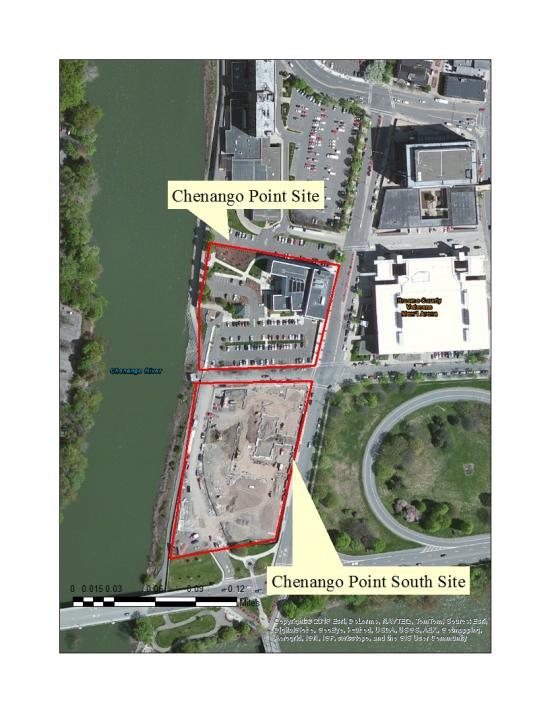
Archaeologists from the Public Archaeology Facility (PAF) completed investigations
on the block containing the Chenango Point South site in 2010. Excavations and analysis
showed that Chenango Point South is part of the site found on the University’s Academic
Center property. Archaeologists recovered over 7,000 lithic (stone) artifacts and
2,000 fragments of clay pottery, and identified 44 stains in the soil that were related
to posts, storage pits, and cooking hearths. Freshwater shellfish was present in at
least two areas, and there was evidence that some shell beads were made at the site.
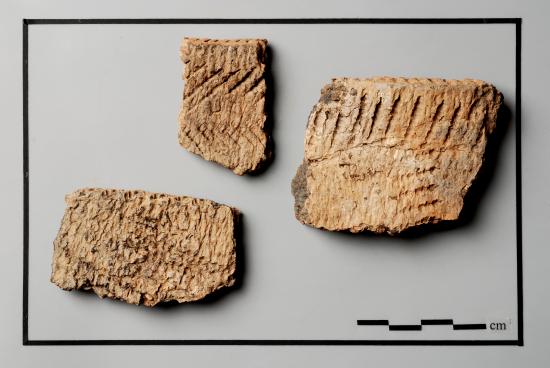
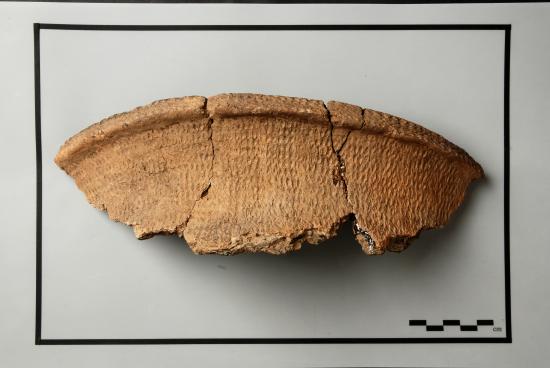
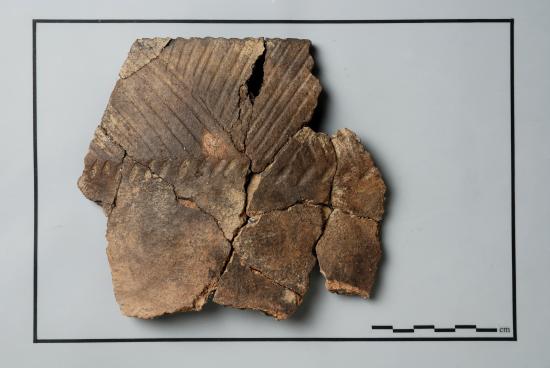
From these excavations, researchers amassed information that provided a more complete picture of life during the Native American agricultural period, known to archaeologists as the Late Woodland. The site produced radiometric and stylistic pottery dates that overlapped the settlement period at the Chenango Point site, and then extended that presence to as late as A.D. 1600. This suggests that as the community grew in size, they shifted parts of the settlement to the south, closer to the confluence of the Chenango and Susquehanna Rivers. We do not have evidence of a longhouse pattern from the decayed posts found in the ground, but that does not mean one was not located here. Historic and modern construction heavily impacted the block and could have erased the fragile traces of residential structures.
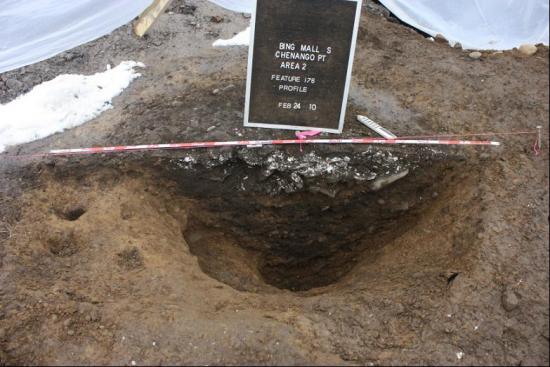
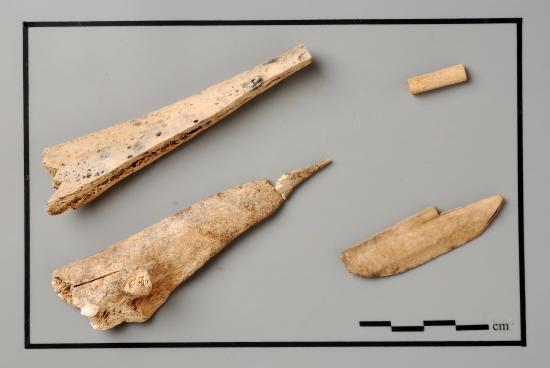
Archaeologists uncovered multiple storage/refuse pits and cooking hearths. Two pits contained a layer of freshwater shell, which helped to preserve fragile tools made from animal bone. The remains of white-tailed deer, fish, and even vulture bones were identified during laboratory analysis. Vulture was probably not consumed but could have been related to ritual practices. Consultations with contemporary Native American communities, particularly the Onondaga Nation, helped archaeologists determine which pit features may have had sacred associations.
The Chenango Point South site, in combination with the site on the Academic Center property, provided archaeologists and Native Americans with new information on the agricultural communities at the confluence. The collaborations among PAF’s archaeologists, Native Americans, and the Twin River Commons developers helped preserve the important information about this long-lost community.
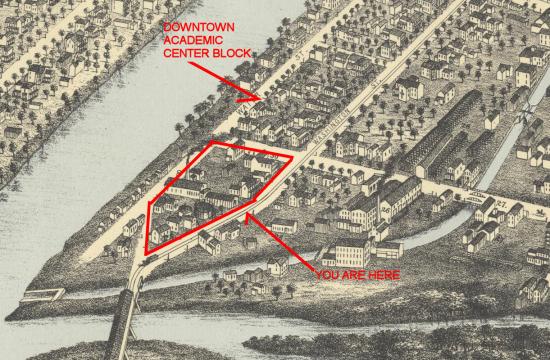
This tour stop is located directly to the south of the Downtown Academic Center Block. The Public Archaeology Facility excavated the northern section of the the block outlined on the 1873 Bird's Eye View in 2009 and 2010. On the 1873 Bird's Eye View, you can see that this area is a mixture of industrial properties, such as the A.L. Davis Carriage Shop at the corner of Washington and Susquehanna Streets, and houses. Several more houses were built along Susquehanna and Water Streets in the 1870s and 1880s; filling in the blank areas on this map. The industrial character of the block, which included the Binghamton Gas Works (located at approximately the center of the block on this image) in addition to the Davis Carriage Factory, influenced the residential section. The noise and dirt from nearby industries discouraged elite and middle-class home owners and the block was primarily composed of rental housing occuppied by working class families. The large complex of buildings located adjacent to the Chenango Canal at the right side of this image is the Weed Tannery and several of the block's residents were employed as tanners.

These images depict two of Binghamton's many cigar factories. On the left is a period image of the street facade of the Wescott cigar factory in the late 19th century and the right contains a recent photo of the George Kent cigar factory on Chenango Street (large, five-story building in the right background of the photo; it was owned by NYSEG in the 20th century), which was removed to build in the new Broome County bus terminal in 2010. Many of the working class families who lived on this block had members who worked in Binghamton's large cigar industry. Cigar makers and packers feature prominently in late 19th and early 20th century census and city directory listings for households on the block. Frequently, several members of the family, including teenage sons and daughters, worked in cigar manufacturing. Labor unrest was a prominent feature of the cigar industry during this period and there was a major strike in 1890. Some of the residents of this block may have participated in this strike and helped to make Binghamton's labor history.
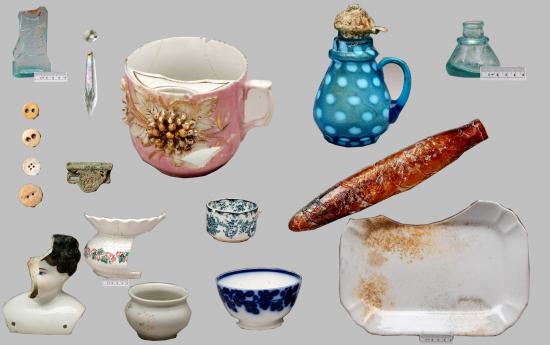
This artifact collage shows several of the tiems recovered from privies or outhouses at the site. Included in the collage are the remains of a bottle of Kilmer's Swamp Root (upper left hand corner), children's toys, a spittoon (lower left corner; red and green decoration), and a mustache cup (left center; pink porcelain with gilding). Common table dishes, such as the white ironstone platter in the lower right corner and the blue and green decorated ceramics to the left of it, were generally of very inexpensive materials and decorations. They contrast with the expensive china doll head and the glass prism, which was one of several we recovered that were probably associated with an elaborate decorative mantle piece or light fixture. Does this difference relate to the different values residents placed on various aspects of their lives? Was dining and the appearance of their table less important than their children's education and development through play or the decoration of their home?